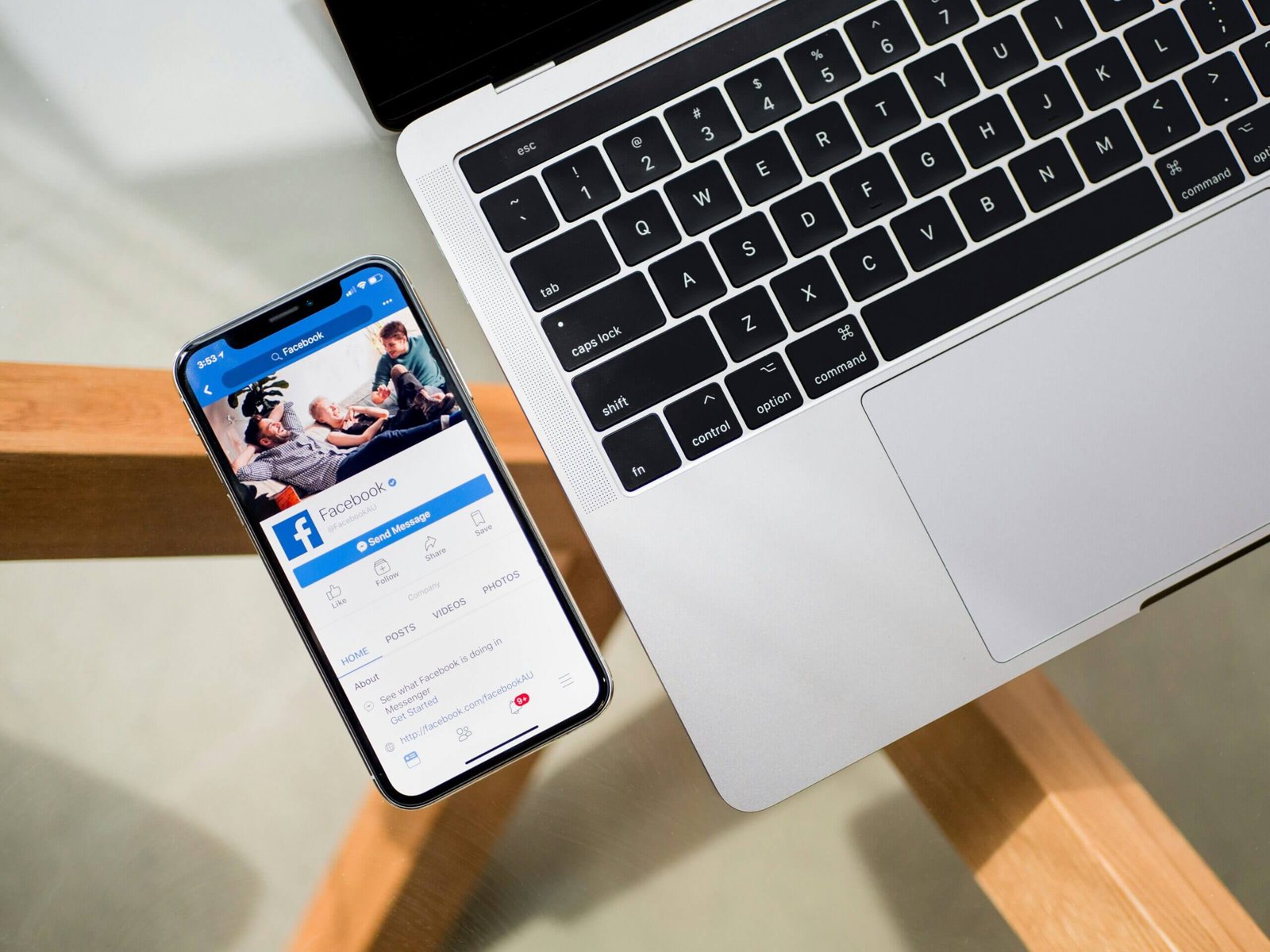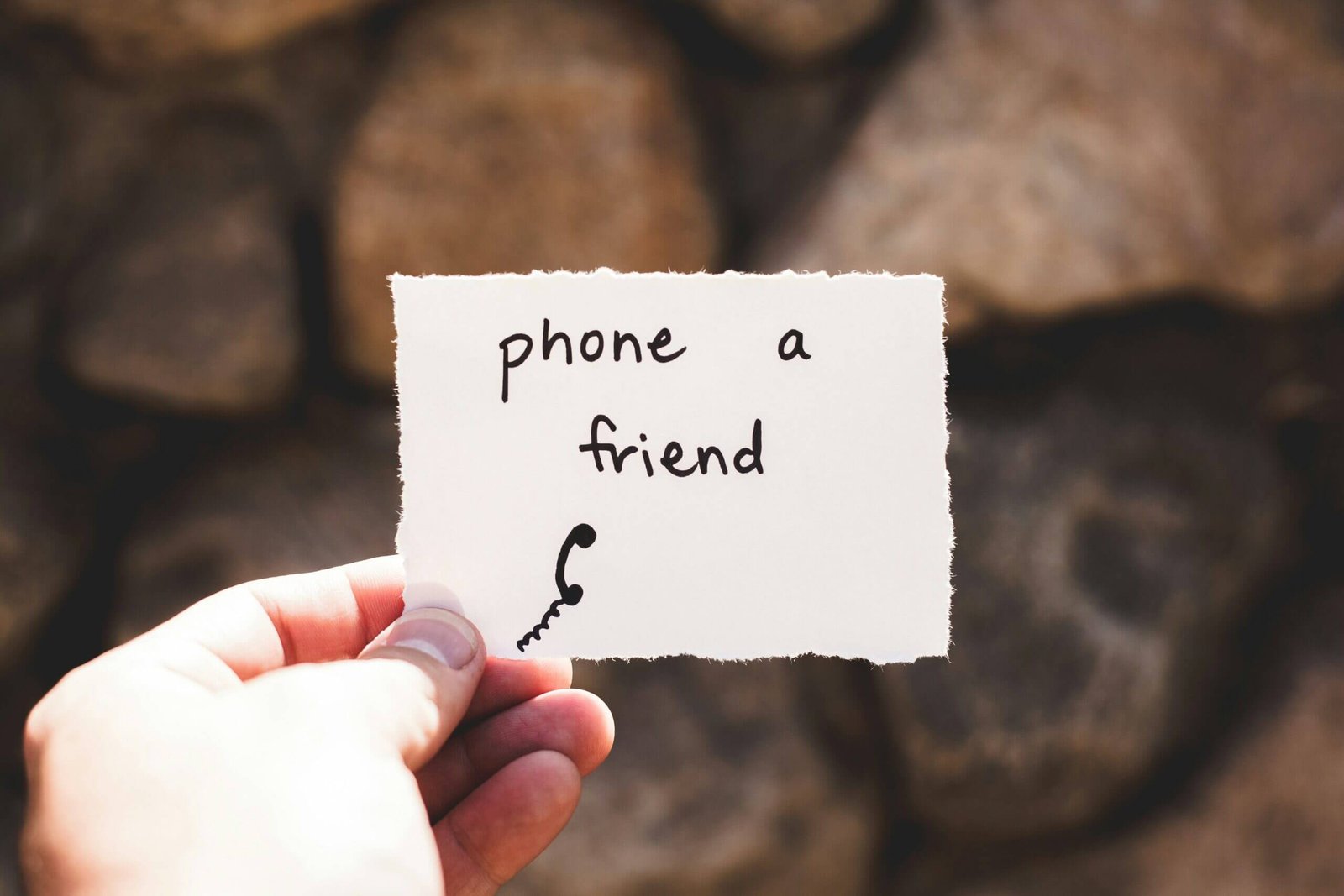Introduction to Digital Detox
The contemporary society increasingly develops dependency on digital devices to communicate, work, and live. With rapid strides in technology, rapid access to information and networking can be conveniently enjoyed at the ever-present risk of resulting in a sea of constant connectivity that keeps getting closer to impeding personal well-being and productivity. Digital detox is therefore called forth as the reversal cure against these effects, nudging people toward scheduled breaks from screens and online engagements.
A time spent away from digital gadgets like smartphones, computers, and tablets might be referred to as a digital detox. This is an important time toward balancing our lives since an excessive exposure to technology may increase the level of stress and causes distractions, thus affecting mental health adversely. Many persons are affected by what can be referred to as “digital stress, which is simply an instance of all one’s attention being bombarded with constant bombardment that has accompanied relentless use of devices.
No doubt, in a world where people seem to multitask and are stormed with plenty of information, no doubt a digital detox cannot be emphasized. Research has outlined that too much exposure to screens hurts our focus and concentration levels, leading to burnout and low productivity. Away from our screens, we are rediscovering real-life interactions, more mindful activities, and clear mental clarity.
Actually, taking a digital detox benefits our mental health positively. Just by pulling the strings off from technology, we can have reflections or brainstorms, lots of creativity, and new energy, and this will finally help us realize our overall well-being in life. At a time when screens almost dominate everything in the world, one is supposed to understand and apply knowledge and practices from digital detox to elevate the quality of life.
Technological Tools for Personal Growth
Today, with the heavy ride of technology in personal as well as professional lives, the myth about the fact that technology is a major distraction due to the over usage of screens and digital devices is quite absorbing. Yet, it is equally important to realize that technology can be used constructively for personal growth and enhance the productive capacity of an individual. There are a number of tools and applications designed specifically to manage tasks, track time, and enhance education.
Task management applications, of course, represent one of the most impactful categories of productivity-increasing tools. Apps like Trello and Asana allow people to visually organize their work and prioritize them based on deadlines and importance. Breaking down projects into smaller pieces makes it easier for individuals to be focused and to avoid having monumental assignments that are more daunting. This all, of course, does not only enhance visibility over task completion but also provides a motivator for accountability and time management skills.
Personal development is another area of application for time tracking applications. For instance, Toggl and Clockify give users the ability to track time spent on their activities and tasks generally. It’s possible to analyze productivity patterns and thereby be able to identify some of those time-wasting activities for efficient adjustments in routine. Better utilization of time leads to better decision-making and improvement of work-life balance.
There are many riches learned through technology. One can find an array of courses from experts like Coursera and Udemy. These resources foster a growth mindset for individuals and enhance continuous learning while improving one’s skills and knowledge simultaneously. It is interesting to point out that though technology can keep one away from what one needs to focus on, still, it is the greatest facilitator of human development and productivity if used correctly.
Building Healthy Tech Habits

In this world, so fast-paced and saturated with technology, establishing healthy tech habits strikes a balance that fosters both mental wellness and productivity. Controlling screen time can be achieved in one very effective way: by imposing strict limits on device usage. Under clear boundaries, individuals are assured that their digital activities will not encroach into the personal time or affect the completion of daily tasks. That often becomes the challenge when reflecting on how much a person uses the device and the extent to which it affects the quality of life overall.
Regulating technology by using technology is a contradictory stance, yet various applications are designed to assist monitoring and limiting screen usage efficiently. These apps give some personalized insights and analytics regarding usage of the day in order that users might understand their patterns and improve themselves in a few areas. For instance, setting reminders daily to log off and having app blockers at specified hours leads to health balance between engaging online and real-life interactions.
Breaks should also be set and become part of one’s routine for guaranteed concentration and productivity. According to the Pomodoro Technique, it is advisable to work for a number of focused intervals then take a short break; this ensures sustained concentration without risking burnout. More intensive physical activity, or even mindfulness practices, can further amplify focus and mental clarity when returning to work or other recreational activities.
Therefore, balancing with technology is not only about being aware but also knowing what one is doing and taking conscious decisions. Re-reading of the purpose behind the utilization of a device for the sake of work, or social connect, or amusement leads to good life further. Self-awareness that can be related to their digital consumption can make them carry out digital habits that replace old habits with new; it will enable them to use technology in order to enhance their life.
The Impact of Screen Time on Mental Clarity

This trend of increased use of screens caught the attention of the world because of their impacts on psychology. Researchers proved that the more one uses screens, the more hazy the mentality is, the higher the level of anxiety, and the more substantial the fatigue is. A study in the Psychological Bulletin finds that it is those people who spend more than six hours a day on screens that have more occurrences of anxiety and lower cognitive performance as compared to people who reduced screen time.
One of the biggest concerns about spending too much time in front of screens is about attention span. The constant stream of notifications and the compulsion to multitask can scatter a person’s focus on important issues. The American Psychological Association’s report concludes that people who spend a lot of time engaging in digital activity tend to feel overwhelmed and less focused. Therefore, this scattered focus not only slows down their productivity but also affects mental clarity, making them incapable of processing the information for proper comprehension.
In addition, a survey conducted by the Pew Research Center indicated that an overwhelming number of teens 57% think they are actually paying less attention to things because of their screen time. This distraction most often relates with higher degrees of feeling fatigue because one could not even begin to wind down and disconnect from devices, therefore disrupting slumber patterns. Sleep deprivation exacerbates anxiety feelings further and further hastens cognitive decline. Hence, these after-results increase the need for effective screen time control and surveillance for better mental health and productivity in general.
When individuals review their consumption of digital media, the crucial task is to establish the connection between this screen time and the health of cognitive abilities. To suggest a balanced approach for technology use helps enhance mental lucidity, anxiety decrease, and then increased productivity in general. These will help achieve better focus regaining in an ever-tech world.
Artificial Intelligence in Personal Development
Artificial intelligence stands out in the modern personal development environment as that transmogrifying force that provides people with new solutions and tools to help them in their self-improvement process. AI-driven services are meant to offer users suggestions from a data set of knowledge and activities customized to meet specific goals, needs, and preferences of the user. Advanced algorithms and deep analysis of the data can help detect patterns of user behavior that AI can then utilize in offering specific learning paths, productivity techniques, and wellness strategies.
One of the most important uses of AI in personal development is, of course, in the automation of routine tasks that can free up time for better use. For instance, scheduling can be handled, reminders can be set, and even content curated for learning use. This saves much time but ensures daily chores are properly done, giving users’ energy towards more meaningful utilization in other growth-enhancing activities.
Additionally, AI ensures that the learning process is more interactive through adaptive learning technologies. These systems change according to the pace and style of learning any particular user type will use, so the educational content will always be interesting and effective. Real-time feedback with assessments helps pinpoint strengths and weaknesses for focused improvement and deeper understanding of subject matter through AI tools. This adaptive approach not only makes the learner more actively engaging in his or her learning process but also empowers personal growth.
This, then, is the opportunity to maximize the integration of artificial intelligence with methods of personal development. With such a rate of advance in technology, the skills of anyone would be enhanced, efficiency improved, and goals reached much more effortlessly. For embracing these developments, users could make full use of what is offered by AI and thereby pursue a more productive, fulfilling life path towards self-improvement.
Using Apps and Tools to Track Progress
In today’s technology-centric environment, numerous applications and tools are designed to assist individuals in tracking their progress toward personal goals. These tools can enhance productivity and focus, providing users with valuable insights into their habits and behaviors. Popular goal-tracking applications such as Todoist, Habitica, and Strides have gained significant traction, each offering unique features catered to different needs.
Todoist serves as a versatile task management tool that allows users to create tasks, set deadlines, and prioritize their responsibilities. With its intuitive interface, users can seamlessly manage their daily agendas while tracking their progress over time. The app employs a point system to gamify productivity, motivating users to complete tasks and stay engaged in their goals.
Habitica is an innovative app that gamifies habit formation and personal development. It transforms mundane tasks into an engaging gaming experience by allowing users to create avatars and earn rewards for completing daily goals. This interactive format encourages users to develop positive habits while creating a sense of accountability among peers, making it an excellent choice for those seeking motivation through a community-driven approach.
Strides offers a straightforward platform for tracking various types of goals, whether they involve building new habits or managing ongoing projects. Its customizable features enable users to set specific milestones and deadlines, providing a clear visual representation of their progress. Users can easily adjust their goals as needed, ensuring that the tracking process remains adaptable and user-friendly.
Each of these applications not only aids in the organization of tasks but also fosters a sense of achievement as users witness their progress. By integrating effective tracking tools into daily routines, individuals can genuinely enhance their focus and productivity without feeling overwhelmed, ultimately leading to personal growth and fulfillment.
Creating a Digital Detox Plan
Establishing a digital detox plan is essential for reclaiming time and focus in a world heavily influenced by technology. The first step in formulating this plan is to identify triggers that lead to excessive screen time or digital consumption. Triggers may vary from social media notifications to work-related emails. Take note of situations or emotions that prompt the urge to reach for a device; this awareness will help in crafting a more effective detox strategy.
Once triggers are recognized, the next phase is to set clear and achievable detox goals. Goals can range from reducing daily screen time to planning specific digital-free hours or days. It is vital to ensure these goals are realistic and tailored to individual lifestyles. For example, a person might aim to limit their smartphone usage to one hour a day or designate Sunday as a completely device-free day. By establishing these benchmarks, individuals can measure progress and stay motivated throughout the detox process.
Choosing the right timing for the detox period is equally crucial. Selecting a time when life is relatively calm—such as following a busy work project or during a relaxed weekend—can enhance the chances of successfully adhering to the plan. Additionally, consider scheduling the detox during times when engaging with technology is less necessary, perhaps during vacations or holidays. The goal is to create a more mindful relationship with technology and improve overall well-being by consciously reducing dependency.
To solidify your digital detox plan, consider sharing it with friends or family for accountability and support. This collaborative effort can foster a community approach, making the experience more rewarding and enriching. By following these steps, a personalized digital detox plan can be effectively implemented, ultimately leading to more focused and intentional technology use.
Success Stories: Individuals Who Chose a Digital Detox
In a world increasingly dominated by technology, many individuals have found themselves overwhelmed and distracted by their devices. Numerous success stories illustrate the transformative impact of digital detoxes. These individuals embarked on a journey to reduce their screen time and recalibrate their relationship with technology, prompting significant changes in their daily lives.
One such story is that of Sarah, a marketing executive who felt overwhelmed by her constant connectivity. Faced with increasing anxiety and diminishing productivity, she decided to take a two-week digital detox. This experience forced her to confront the challenges of disconnecting from her smartphone and the endless notifications that came with it. Initially, she felt disconnected from her work and social circles. However, as the days progressed, she rediscovered the joys of reading, spending time outdoors, and fostering deeper conversations with her friends and family.
Similarly, Tom, a college student, noticed that social media was consuming a significant portion of his study time. Seeking to enhance his academic performance, he chose to implement a month-long break from all social media platforms. Initially faced with withdrawal symptoms and boredom, he soon found himself more focused on his coursework, leading to improved grades and a renewed sense of purpose. Tom reported a more significant engagement during classes and rediscovered hobbies that he had previously neglected.
These personal accounts highlight that embarking on a digital detox can be challenging yet rewarding. Participants often confront various obstacles, including the fear of missing out and difficulty adjusting to a less busy lifestyle. However, the positive outcomes they experience—enhanced focus, improved mental well-being, and better interpersonal relationships—illustrate the profound benefits of taking time away from screens. By embracing this journey, they not only reclaim their time but also enhance their overall quality of life.
Conclusion and Final Thoughts
Moving through the ever-advancing technology-based world, we need a digital detox more than ever. This blog post has covered different ways in which technology affects daily life and casts a shadow over one’s productivity and mental well-being. Reflecting on your current technology usage, areas where you might be over-reliant on digital devices become apparent. People often pay little mind to how constant notifications and overall screen time subtract from time spent on individualized interactions and from time spent working with deep focus. So taking a little time to reflect on how digital media is affecting your time management can lead to huge improvements in both focus and mental health.
Living with the right measure of autonomy from technology also depends on boundaries. In simple words, a defined digital detox by setting limits around when to use devices in specific hours, accompanied by defined zones free from technology, can help bring forward a tone for more mindful consumption. Taking pauses from digital devices in a planned way can facilitate much deeper focus and engaging connections with others. Studies have shown that reduced screen time is associated with creativity and emotional well-being and boosts cognition.
A digital detox therefore means keeping under your control both time and mind, free from distractions. Having conscious choices about the amount of use you’ll be having with your healthy lifestyle can actually encourage productivity while considering your gains on the new development. As you progress, consider what you want for your digital consumption and make activities worth the well-being. Acting in favor of a more balanced life attuned to technology may bring long-term benefits at the levels of personal and professional endeavors.




I like the efforts you have put in this, regards for all the great content.
I just like the helpful information you provide in your articles